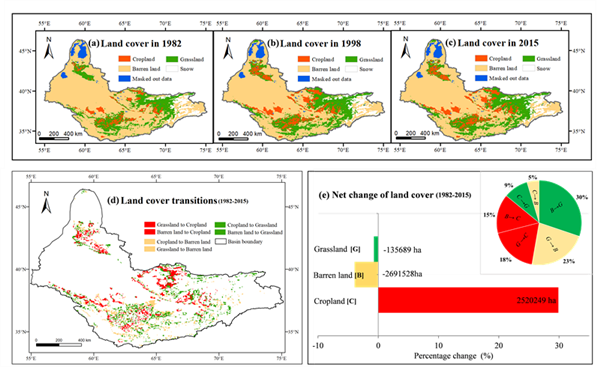Scientists Made Progress on Dynamic Changes and Driving Factors of Runoff in Amu Darya River Basin, Central Asia
2021-09-22
Amu Darya River (ADR) is the largest river in the Aral Sea basin. With the impacts of climate and land-use changes, dam/reservoir construction, and unsustainable human water consumption, water flows into Aral Sea from the ADR has decreased, causing serious ecological problems.
A comprehensive assessment of the runoff dynamics in the Amu Darya River Basin (ADRB) and its influencing factors is significant for regional water resources management.
Researchers from Xinjiang Institute of Ecology and Geography, Chinese Academy of Sciences, applied the elasticity coefficient method coupled with the water balance and Budyko framework to comprehensively investigate the runoff dynamics of ADRB and quantify its influencing factors.
Research results show that the runoff of the ADRB decreased from upstream to downstream at rates of -0.52 mm/a, -0.80 mm/a, and -0.97 mm/a during 1960-2017, respectively. The relative contribution of climate change to runoff reduction ranged from -14.25% to -5.43%, while that of human activity factors such as population increase, cropland expansion, and the dam/reservoir construction dominated the reduction of runoff. This research provides a scientific reference for improving water resources management and promoting the realization of regional sustainable development.
The results are published in Journal of Hydrology. Article link:https://www.sciencedirect.com/science/article/pii/S0022169421009550?via%3Dihub

Fig.1. Spatio-temporal changes among vegetation types.

Fig.2. Trend analysis of the n parameter and vegetation coverage (a); relationships between n parameter and vegetation coverage (b).
Contact: LIU Jie, Xinjiang Institute of Ecology and Geography
E-mail: liujie@ms.xjb.ac.cn



